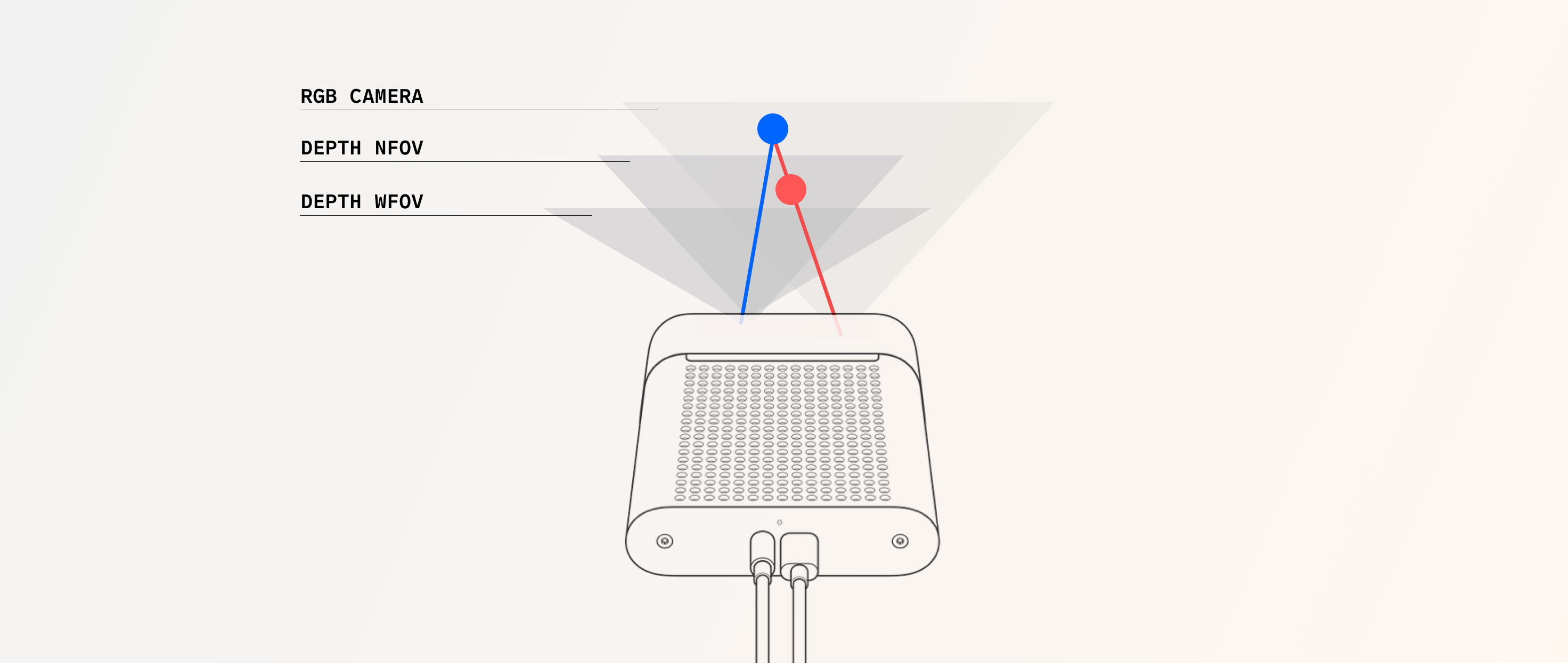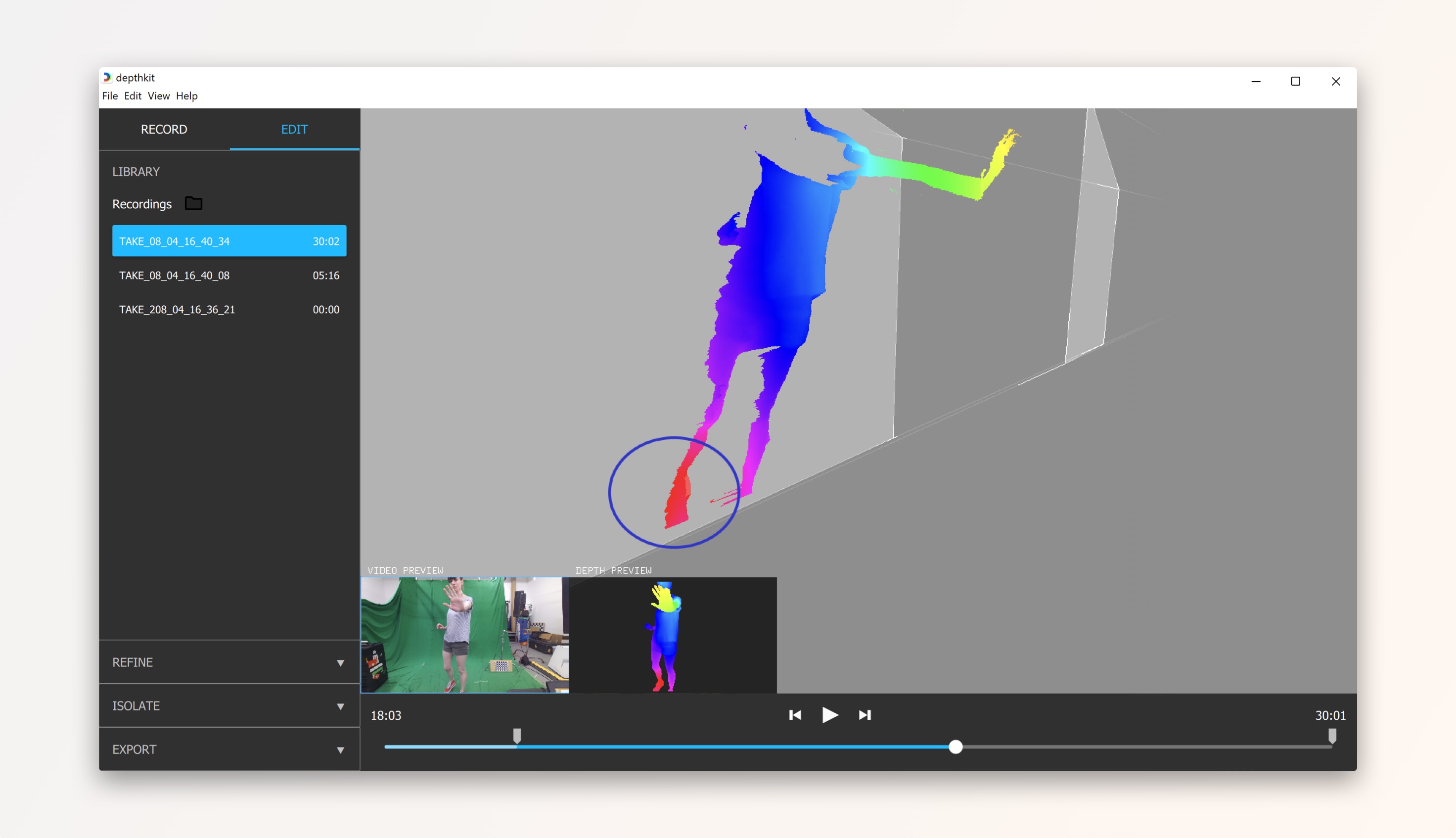Visual artifacts
Color Data Shadow
In the 3D view-port, you may notice a slim outline in your Depthkit capture when the depth range is set to the maximum range. This is a characteristic of the depth sensor that can appear like a double image or outline. This behavior can be described in the image below.
Imagine the two dots as spheres on the same plane. The two lines represent single pixels, or rays, in the camera (blue in depth, and red in color). Notice that on the point where the blue sphere is detected in the depth camera, the path to the color camera actually passes through the red sphere in the foreground. This means when the color on that point of the background sphere is displayed, it will actually receive the color from the foreground sphere. If you think of the color camera as a "data light", then the background sphere is in the "color data shadow". The foreground sphere is eclipsing it's color data. When we look from the perspective of the depth camera, we see a double image of the occluded data.

Holes in depth data
Due to the way in which depth cameras sense depth, there are certain materials that cause errors in the depth data during capture. These are usually reflective or shiny materials that will cause holes and similar artifacts in your depth stream. Read more about material and garment constraints. To repair and reduce these artifacts, Depthkit's Refinement algorithm is designed to clean up and enhance your volumetric data.
Low-quality/noisy depth data
Like cameras, time-of-flight sensors inherently capture some amount of noise in the data - This manifests as small vibrations, or an animated bumpiness on your subject.
If your capture environment contains anything that increases this noise, like tungsten/halogen lighting or sunlight, it will increase the effect of this noise. Look for any sources of noise in your capture area and remove them.
Visual artifacts in Combined Per Pixel clip in Unity
Some visual artifacts in a Combined Per Pixel clip can show in Unity, located at the near plane of your subject, even though they are not visible in the Depthkit application.
This is a known issue related to the far plane value of your depth range, when the far plane is very close to your subject, as seen in the image below. It applies to combined per pixel exports in Unity when using the Unity video player as your Depthkit clip video player.

To avoid this Unity artifact:
-
Move the far plane away from your subject slightly, so the hue encoded depth is no longer red.
-
If you have already exported your clips and do not have time to re-export, set your Depthkit clip video play to AVPro in Unity. This will get rid of any unwanted artifacts.
Updated 9 months ago
